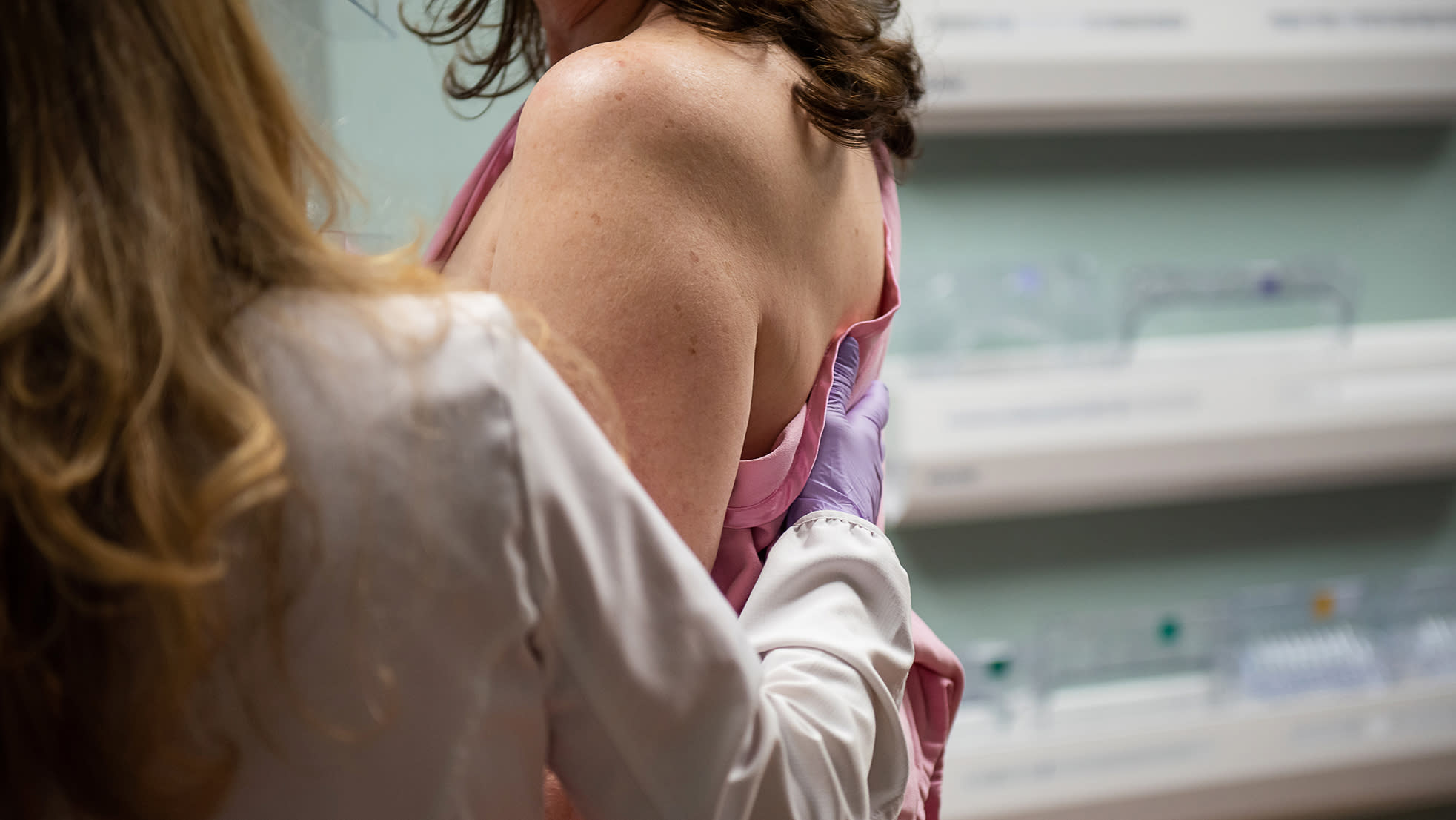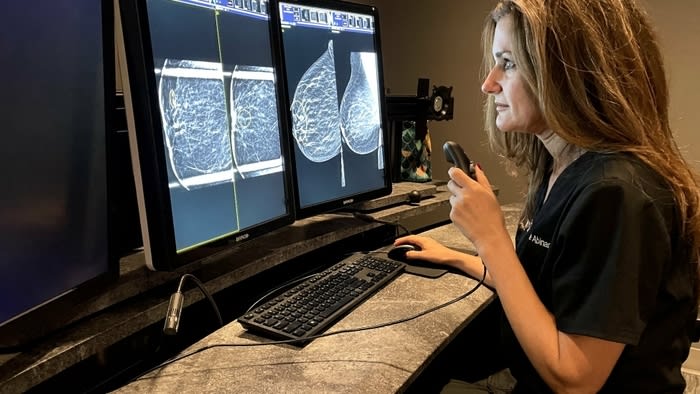
Your breasts will change over your adult life — common reasons for changes include pregnancy, your menstrual cycle, menopause, aging and hormonal medications (such as birth control).
It may surprise you to learn that a monthly breast self-exam is no longer specifically recommended as a cancer screening method. However, routine breast self-exams make you familiar with how your breasts normally feel, which in turn can help you more easily notice changes. If you ever notice a change, tell your doctor. They can help you decide if you need more screening.

1 in 8 women will get invasive breast cancer during their lifetime, making it the second most common cancer in women after skin cancer. Breast cancer is also the second-leading cause of cancer death in women. Lung cancer is No. 1.

About 8 in 10 cases of invasive breast cancer began in the milk ducts, and 1 in 10 began in the lobules. (They became “invasive breast cancers” once the cancer began spreading into nearby breast tissue.)
Notably, 1 in 5 are found when cells within the ducts have become cancer cells, but the cancer hasn’t spread to nearby tissue yet. Almost every woman diagnosed at this stage (also called “stage zero”) can be cured — a great reason to get screened regularly.

Contrary to popular belief, breast size and breast density are not related. “Breast density” describes the makeup of breast tissue a radiologist sees on your mammogram. A woman has “dense” breasts when she has a high proportion of glandular and fibrous connective tissue, and a low proportion of fatty breast tissue.
Why do we care? Women with dense breasts are at a higher risk of breast cancer. Additionally, mammograms of dense breasts can be harder to interpret — which means women with dense breasts sometimes need other imaging to get an accurate picture of their breasts. After your mammogram, your doctor will talk with you about your breast density and what it means for you.

Guidelines about “when” and “how often” to screen for breast cancer differ. However, all medical experts agree that by 40, regular mammograms are important to help catch breast cancer while it is easier to treat, and often before you experience symptoms. At Novant Health, we recommend an individualized process: talk with your doctor, who can help you decide. For example, some women may need to start earlier based on family history.

Some women don’t experience any symptoms of breast cancer. Getting regular mammograms can help detect breast cancer up to three years before a lump or growth can be felt.
Some women DO have signs, though — so see your doctor if you notice any of the following:
- Breast pain
- New lump in your breast or armpit
- Irritation on your skin or nipple
- Pain or pulling in your nipple
- Discharge from your nipple (other than breast milk)
- Any change in the size, shape or thickness of the breast

There are two types of mammograms: the screening mammogram (for women who don’t have symptoms of breast cancer) and the diagnostic mammogram (a more in-depth look that happens after a symptom that might suggest breast cancer has occurred; these are also performed regularly for up to two years after a diagnosis of breast cancer). In both types, radiologists are looking for all the abnormalities listed, and any changes in your breasts from year to year.
To make sure you are getting the most out of your mammograms, have all of your mammograms done within the same health system. This allows your doctors to compare images from one year to the next. If you have changed doctors or clinics, arrange to have past images sent to your current provider.

Mammograms are uncomfortable. During a mammogram, your breast will be flattened between several plastic plates in order to get clear X-ray views from several angles. Thankfully, the whole process only lasts a few minutes.
Experts recommend that you schedule your mammogram the week after your period when your breasts are usually not as tender. You’ll need to disrobe from the waist up for your mammogram, and avoid perfumes, lotions and deodorant/antiperspirant because they will show up on the X-ray and complicate interpretation.
If you have implants, it’s important to schedule your mammography with a technologist and radiologist who have experience screening women with breast implants. They will need to use special techniques to complete your imaging, as implants can make it difficult to see all your breast tissue.

If you’re over 40, you don’t need a referral or order from your doctor for a screening mammogram. Just schedule it yourself at the time and location that works best for you —some locations may even have next-day availability!
Nice work! Keep learning more about this important area of your health -- talk with your doctor about your individual risk.
Great job! You have a solid grasp of breast cancer basics. Make sure you're turning all that great knowledge into action by talking with your doctor about your individual risk and getting mammograms as needed.
Congratulations -- you know a lot about breast cancer! Make sure you're turning all that great knowledge into action by talking with your doctor about your individual risk and getting mammograms as needed.